Updated 13 October 2024
DuoLingo is a language app available on Android and IOS as well as a web browser version. I have been using it every day for nearly two years to learn Ukrainian, usually on my phone (Android) and sometimes on my iPad (IOS) and once or twice on my PC. My experience, therefore, is based on just one language, so some of my comments are specific to that, whilst others are more generic.
You will have guessed from the title that I am not entirely happy with it, and I’m writing this in the hope that DuoLingo folks might actually read it and make some improvements, because they have so far not responded to any other communication (see below for more on this).
DuoLingo Positives
Let’s start with the good stuff.
Firstly, the app is completely free, and although there is advertising in the free version, it is not too intrusive (but see update below). Other language apps also offer free versions, but as far as I know DuoLingo is the only one where the free version gives access to the entire language course. There are some extras in the paid-for version (called Super), which I cover below, but the good news here is that you can take the full language course of your choice for free. So thank you DuoLingo – I can forgive all the criticisms below for this one feature!
Secondly, it uses a reasonable range of lesson types to help you learn: there are listening questions where you hear a word or a phrase and see a number of words in the language to choose from. There are speaking exercises, where you see a word or phrase in the language and have to speak it out loud (you can listen to the phrase first if you wish, as many times as you want). There are also multiple-choice questions where you see (or hear) a number of words in your native language (English in my case – I will refer to English from now on in place of “native language”) and also the words in your target language and you have to match them up. Another type of listening question is where you hear the word or phrase and them have to match it to the equivalent in English. Sometimes you have to match a spoken word to pictures. And for questions where you have to choose the answer in the target language you can choose to type it in instead of picking from displayed words – but you’ll need the appropriate language keyboard for this, e.g. Ukrainian Cyrillic. Some questions include a partial phrase in your target language and you have to choose the word to complete it. There is also a section where you can learn the letters of your language – how they look and how they sound.
A third positive is the gamification aspect. You do not have to engage in this, but if you wish you can join in Friend Quests where you pair up with someone in your selected group and work together to complete a task and get rewards in the form of “gems” and “XP-boosts”. XP (experience points) measure your progress and accumulate over time, and are also used in leaderboards and quests. You earn a basic amount of XP for each question you answer, and each group of questions in a round will then give you the XP you have earned. Gems can be exchanged for advanced (so called Legendary) level questions where you earn extra XP, and XP-boosts which last 15 or 30 minutes depending on the boost, give you double the normal XP during that time. Each week you will be included in a group of around 20 players drawn at random (not all of whom are studying the same language), and during the week the amount of XP you earn is compared with the other players to get your place on the leaderboard. If you succeed in reaching the top of the leaderboard you progress through different leagues up to the top Diamond league, and there are also rewards for getting top three places in the form of extra gems.
You can also use gems to take part in the “Ramp-up” exercises that feature in the leaderboards. These provide higher rewards as you answer each set of questions, but each set becomes more challenging due to time limits. Each day there are three Daily Quests – these vary a little and include things like getting a set number of perfect lessons, spending a specified amount of time learning, earning a set amount of XP, etc. Over time you also earn badges, some of which also grant you rewards in gems.
You can also use gems to take part in the “Ramp-up” exercises that feature in the leaderboards. These provide higher rewards as you answer each set of questions, but each set becomes more challenging due to time limits. Each day there are three Daily Quests – these vary a little and include things like getting a set number of perfect lessons, spending a specified amount of time learning, earning a set amount of XP, etc. Over time you also earn badges, some of which also grant you rewards in gems.
The philosophy is that the gaming gives an extra incentive, and I guess it will work for some and not for others; but it isn’t forced on you and you can just ignore it if you wish.
Fourthly, and finally, In terms of the breadth of what you are taught, I can only speak for Ukrainian. By the time you finish the course you will have been exposed to around 1100 words which include nouns, verbs (and verb-forms), adjectives and adverbs, prepositions, etc. For the most part the choice of words you are exposed to is useful for learning a language – nouns about people, places, forms of transport, parts of the body, occupations, and so on; verbs about seeing, hearing, speaking, doing, etc. There are gaps, though, and odd choices (see below).
DuoLingo Negatives
There are just too many niggles, mistakes and bugs for me to really love the app. I have contacted DuoLingo about most of these and have never had any response, nor seen any of them fixed.
[1] Which brings me to my number one criticism: user support. This is basically non-existent. I don’t know if it’s any better for those who subscribe, but I suspect not. To begin with they make it very difficult to actually raise issues directly. You have to go to your profile, choose settings, help and then scroll to the bottom where you can submit a bug. I have done this more than once and have never received a response. I guess they have millions of users, but that’s no excuse.
[2] Criticism number two is that some questions have mistakes (at least I’m sure they are mistakes, but since I have never had a response to explain the issue I can’t be 100% on this). Here’s an example. One question I get from time to time is the short phrase “nice to meet you too” and I get to choose from “мені теж” (pronounced meni tezh) which means literally “me too”, “дуже приємно” (nice to meet you) and “але” (but). The mistake I have encountered is that Мені теж is the supposed correct answer as shown in the two screenshots, when in fact none of the three choices is correct, though “дуже приємно” is closer than “мені теж”.
[3] Related to this is that DuoLingo’s dictionary often varies from other dictionaries, so one wonders quite how applicable to real life their version is. For example they use довідка for information desk, but Google translate provides довідковий стіл and translates довідка as certificate, information or reference. Another example is the above-mentioned phrase “дуже приємно” which DuoLingo says means “nice to meet you” but Google says means “very nice”; and DuoLingo also has “мені теж дуже приємно” which it says means “I am also pleased to meet you” but Google says just means “I am also very pleased”. Moreover DuoLingo also provides “дуже приємно мені теж“ meaning “Nice to meet you, me too” but Google says still just means “I am also pleased to meet you”.
[4] My next issue is the vocabulary. As noted above, for the most part the words you learn are useful, but there are a lot of strange inclusions and many omissions. In the latter case, for example, you get to learn the words for head, ear, eye, throat, hand, leg, foot, stomach and back but no other parts of the body, and on the other hand you learn words like superstition, non-governmental organisation, advertising, strike (as in going on strike), rally and postmodernism! Other omissions include hours of the day but not parts of the hour, hryvnia (Ukrainian currency), dollar and euro – but no other currencies. In fact the English in DuoLingo is heavily American-oriented, for example Denver and Atlanta are frequently used in questions, as well a American football and baseball as sports. Related to this is that the total number of words you can learn on the course (which I have completed) is around 1100, but DuoLingo’s achievements for number of words go up to 1500 – a target I can never reach just from Ukrainian - so I assume there is greater vocabulary available in other languages.
[5] Next is the listening engine. When you speak a phrase it’s very hit and miss as to whether you get it right or not. I guess the sensitivity of your device plays a part in this, but I get the same issues on both my smartphone and iPad, and also it’s inconsistent (i.e. sometimes I’m marked right and others wrong for the exact same phrase), so my guess is the listening engine itself. Examples of what goes wrong:
- One time I will speak a phrase and get it marked right, and then the next time the same phrase is marked wrong when I speak it.
- Sometimes I will start speaking and get marked right before the phrase is complete, and sometimes wrong before the phrase is complete (even though I have got it right before).
- Sometimes I know I have muffed it up completely but I get marked right!
- It seems particularly hard to get it to recognise when I say words like дід (grandad, pronounced “did” with a slight ee inflection on the i) and дім (home, pronounced “dim” with similar inflection on the i), but also tongue twister numbers like двадцять (20: dvadtsyatʹ), тринадцять (13: trynadtsyatʹ) and тридцять (30: trydtsyatʹ).
[6] Sixth is the variable pronunciation of the male and female voices used. They often pronounce the same word very differently so it’s hard to learn what’s correct. Moreover the Ukrainian refugee family who were living with us a while ago often said that they were mis-pronouncing the words with the stress in the wrong place. One example is the word довідка which means information desk as noted above. This should (I think) be pronounced “dovidka” but the DuoLingo often distinctly says “dovidikaiya” (i.e. довідікаія (which means evidence)).
[7] The advertising on my Android phone goes wrong when I get either of the two DuoLingo adverts (one for DuoLingo Super and one for DuoLingo Family) – what happens is that the advert plays through and then when you tap the close button it just plays again and again... You have to exit and close the app and re-start. This doesn’t occur on the IOS version. When this bug happens, quite often the reward I would be due from the Daily Quest is not awarded – though this is variable, because sometimes it is.
[8] Related to this is a bug in the Android version (on my phone at least). Once an hour you can choose to watch an advert and receive some gems (usually 7 or 15). This works fine on my iPad, but on my phone when you watch and advert you get the notification of so many gems being awarded… except that they aren’t!
[9] As noted above, I have completed the Ukrainian course, so now I simply get to practice from the final section – “Daily Refresh”. This provides five sets of normal questions (i.e. you earn the basic amount of XP for completing them) and one “Daily challenge” round that give doubles XP. Now I wouldn’t mind repeating exercises from earlier in the course – in fact I’d welcome it – but each day I get the exact same set of around 20 questions repeated across the five “normal” sets. Why on earth DuoLingo doesn’t randomly draw from the entire course I do not understand. At least I can also do “Practice to earn hearts” questions, which are drawn from the wider pool (only Android, though, not on IOS – see next point). In mitigation, one can go back and redo earlier sections in the course, but as I also like to play for XP and you only get half the amount for redoing questions, I don’t bother.
[10] Number ten is the difference between platforms. On the iPad I cannot do repeated “Practice to earn hearts” exercises if my hearts complement is full (5 hearts), but I can on the Android smartphone. Also (though now resolved) at one time the cost in gems of doing some questions was different across the platforms. A minor niggle (but still a niggle) is that on IOS and PC (browser) achievements are shown as a list with an exact score – for example I know that I have learned 1099 words as a “Scholar” but on Android the equivalent “Word Collector” is simply an icon and “8 of 10” shown; if I tap on it it tells me I have collected 1000 words. Also on the PC there are ten types of achievement but on Android there are thirteen.
[11] Leaderboards. I find that sometimes I am matched with a set of people who tend to earn about the same amount of XP in a week as I do on average, which gives me a (and them) a fair chance of getting a top three placing. But far more often there is huge disparity with the top placers getting as much as five or ten times as much XP as the rest of us. These are usually people on the paid-for subscription (Super DuoLingo) where it is much easier to earn XP (I know because sometimes I get given three free days trial) – this is because, for example, you can do Legendary level questions, which earn double XP, without having to spend gems, plus you get to do the Ramp-up questions for free (i.e. no gems cost); and you also get access to the practice your mistakes section which only Super users can get to. Now I don’t mind at all that Super users get more features and easier “earning” power, but it seems unfair to match them against non-Super users in the leaderboards.
Update
One would hope that over time an application would getter better, i.e. bugs fixed and user experience enhanced. With DuoLingo this is not the case! Since writing the above review (January 2024) some changes have occurred that make the user experience even worse! So, to add to the Negative list above:
[12] Advertising has changed so that very often you get two adverts in a row instead of just one at a time. This will comprise a normal advert - i.e. a product outside of the DuoLingo domain, where they earn money for displaying it, followed by one of the two DuoLingo adverts mentioned above (7). Apart from the fact that it adds to user-frustration, it also takes up more time and if you are using your XP-boost time, it eats into this unnecessarily.
[13] After each lesson (set of questions) you used to get a tally for your answers (i.e. % answered correctly) plus an XP award. But now you get three tallies (total XP, time taken, percentage correct) that count up sequentially before you can move on. Again, this is just a time waster and very frustrating.
[14] The Ramp-up challenges that are available each week have increased their gems cost more than threefold, from 30 gems per shot to 100.
[15] Lack of consistency in marking. When you complete a set of questions you get a mark out of 100%, and you also get awarded XP points. On a normal practice exercise with no boosts this is a maximum of 15 XP, and if you are using a boost, it's 30 XP. Now here's the rub: if you get any of your answers wrong you get less than 100%, and so less XP. Fair enough? Well only if the marking is consistent - which it isn't. Take a look at the 3 screenshots below. In each case only one question was wrong, but the marks awarded ranged were 94%. But look at the XP rewards: 30, 28 and 26 - all for exercises where only one question was wrong, and the marks were the same!

|

|

|
Conclusion
My overall verdict on DuoLingo is that it is a good app and you can learn a lot if you use it and practice regularly. But the sheer number of issues and niggles makes it a frustrating experience, and I only persevere because learning the language is important to me. I certainly would not even consider the paid-for version (which is not cheap) with all these problems.
So, DuoLingo if you read this, I hope you will take on board the issues reported and do something about them. You have created a tremendous, but flawed, resource.
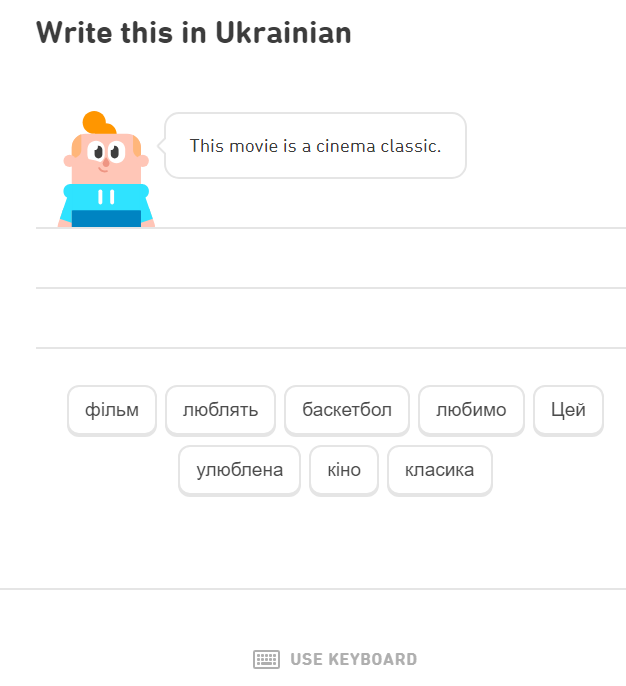
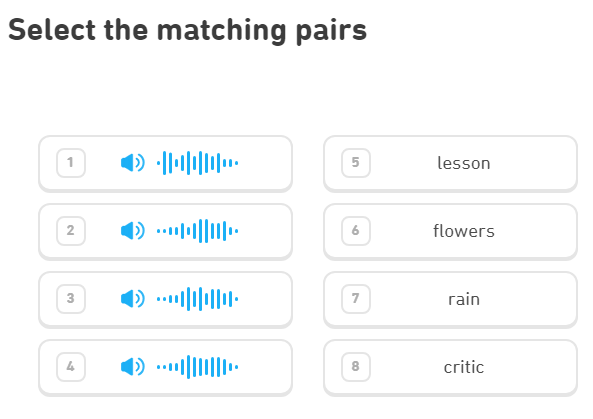
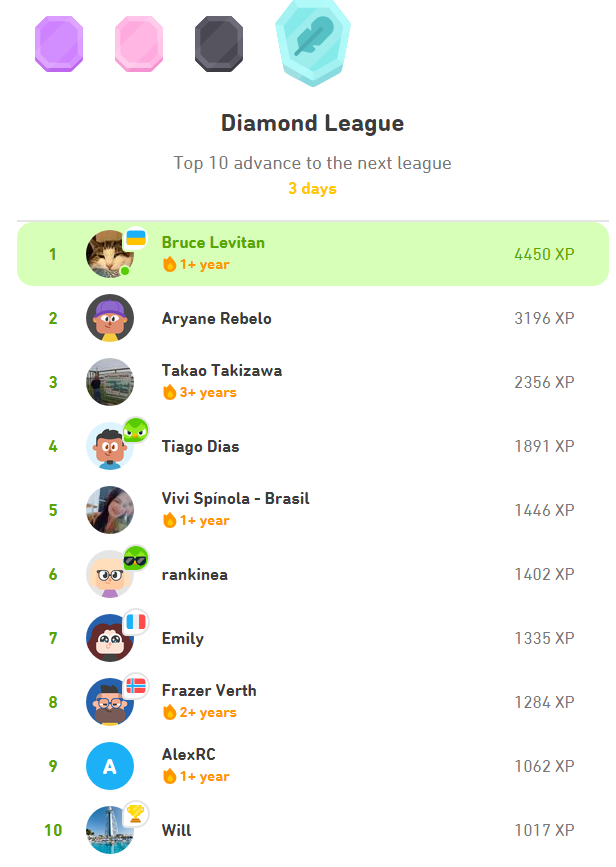
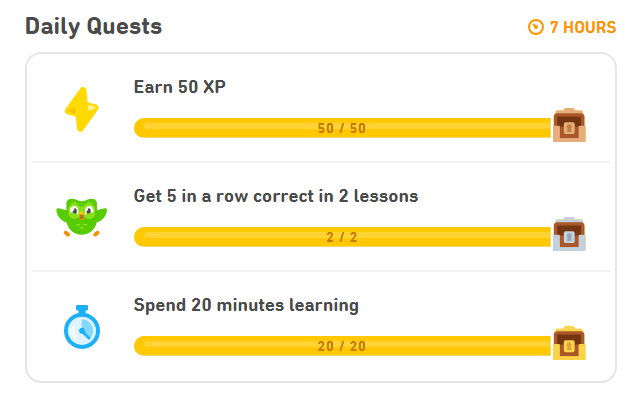
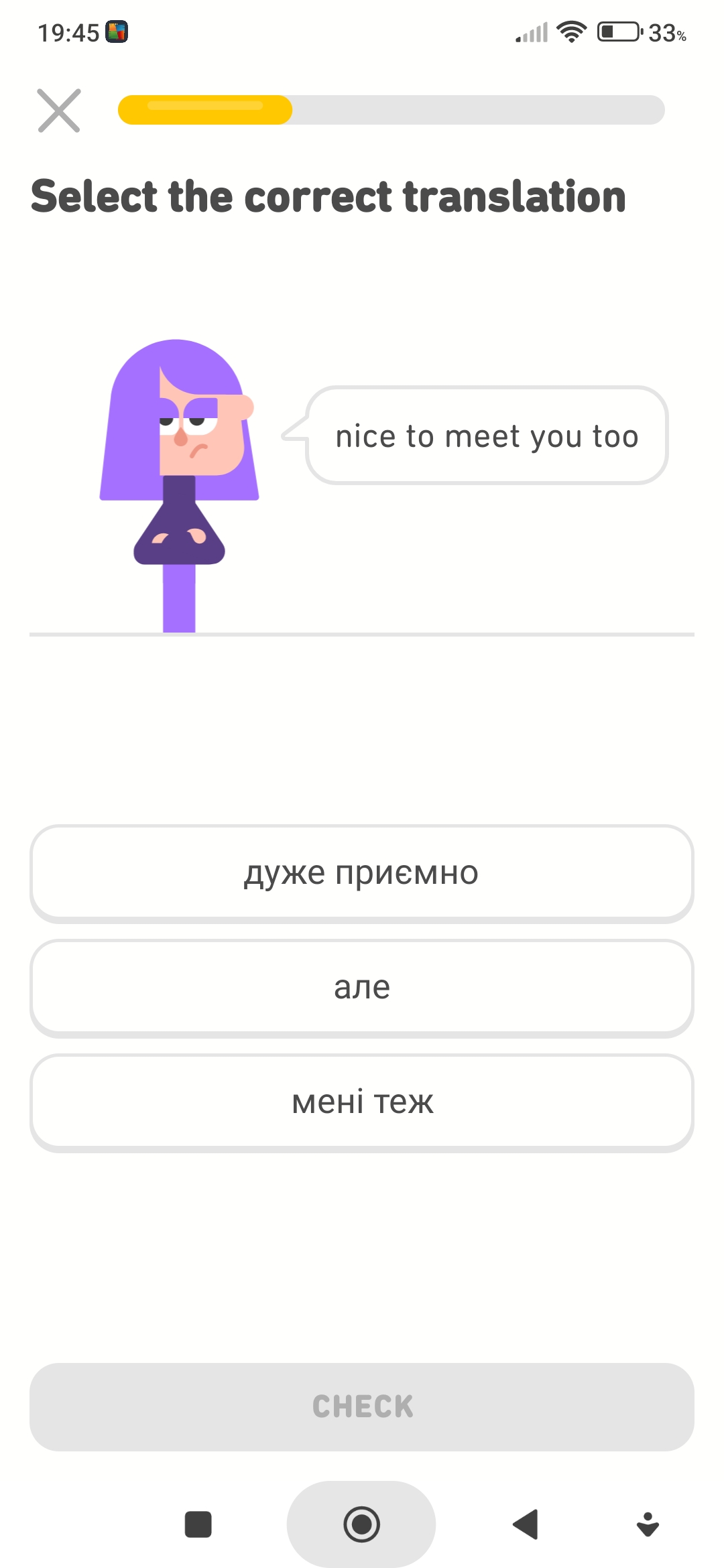
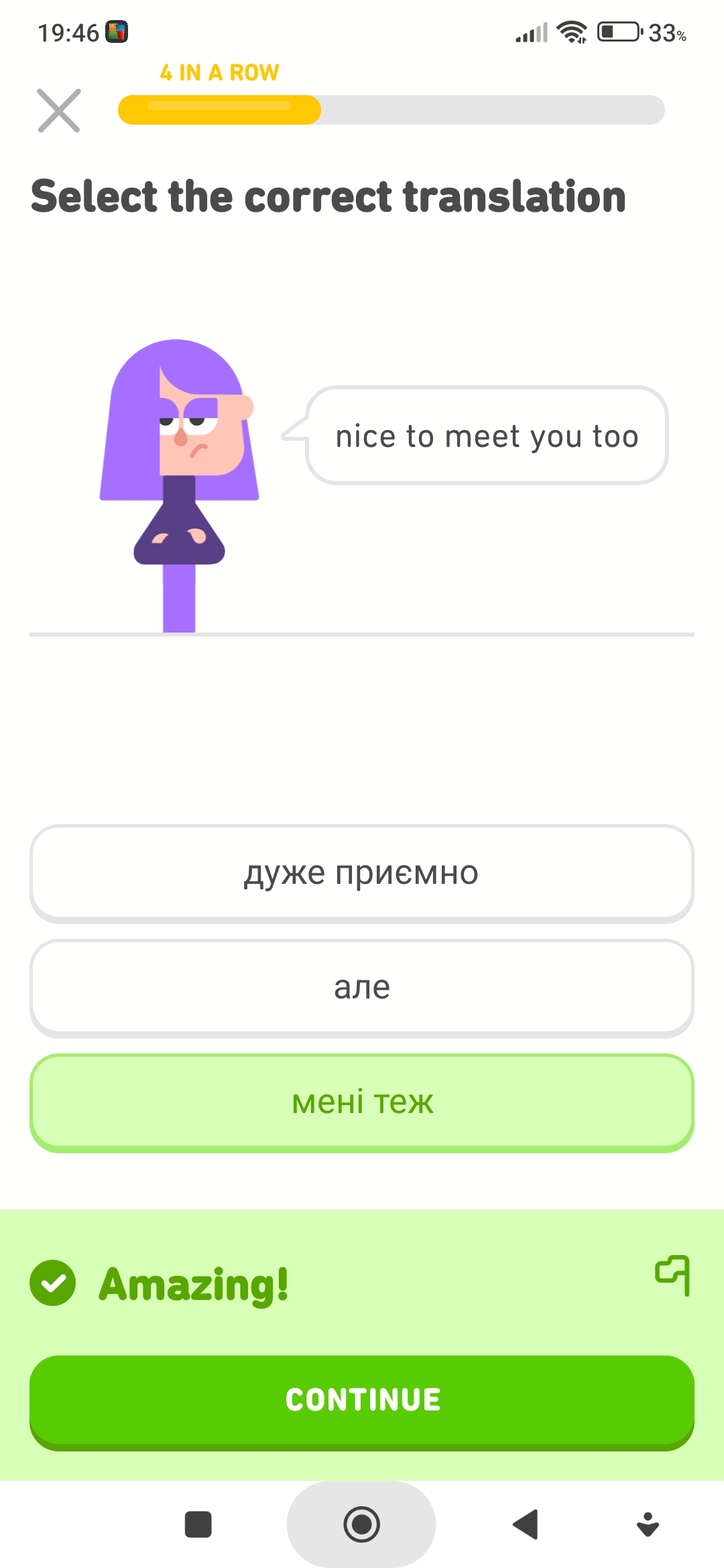

No comments:
Post a Comment